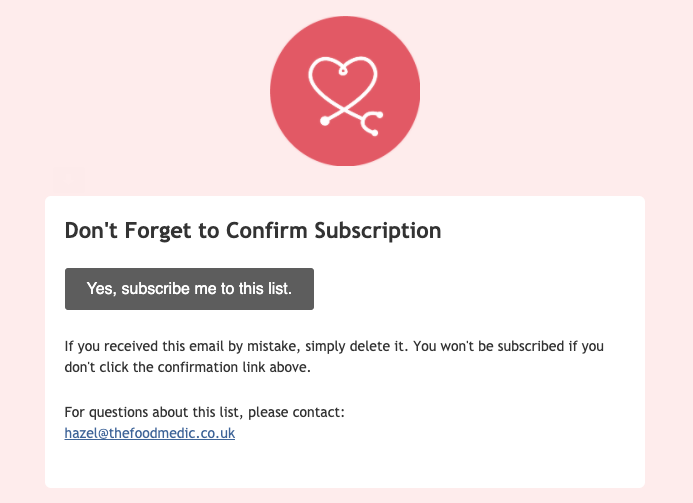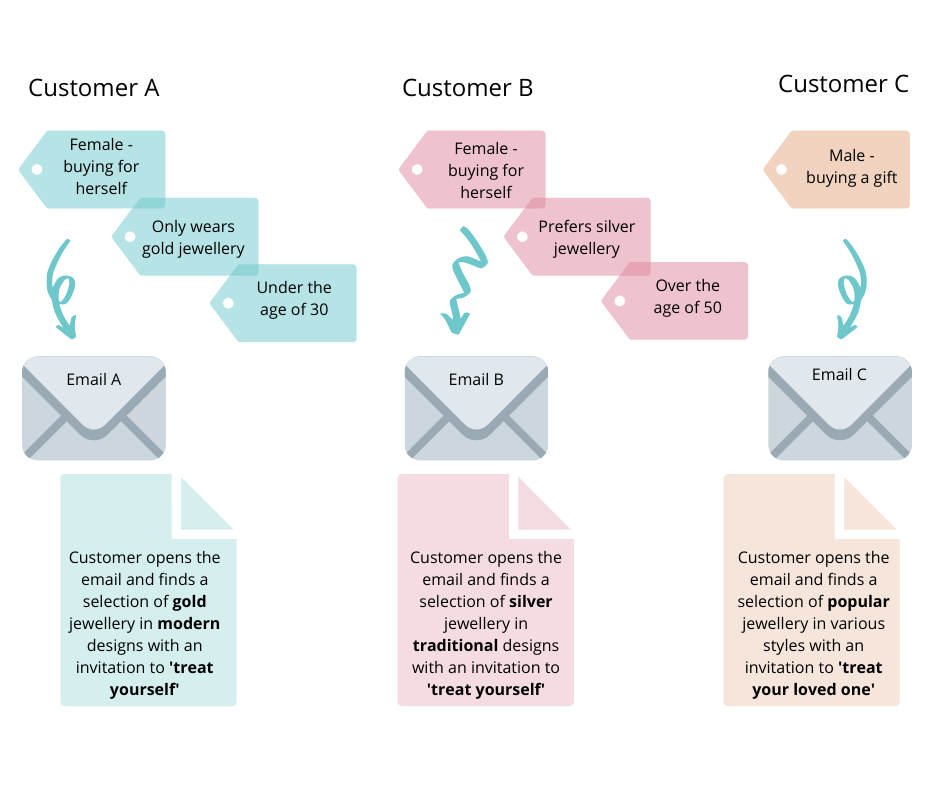Email marketing faces several common problems. These issues can hinder its effectiveness.
Email marketing is a powerful tool for businesses. Yet, it’s not without challenges. From deliverability issues to engaging the audience, various obstacles can arise. Spam filters, low open rates, and high unsubscribe rates are just a few examples. Understanding these problems is key to improving your email campaigns.
In this blog post, we will explore the main problems in email marketing. We’ll also discuss ways to address them. This will help you make the most of your email marketing efforts. Let’s dive into the common problems and find solutions together.

Credit: financesonline.com
Deliverability Issues
Email marketing can be a powerful tool. Yet, it often faces deliverability issues. Deliverability issues occur when emails do not reach the recipient’s inbox. This can be due to various reasons. Two significant factors are spam filters and email bounces.
Spam Filters
Spam filters are programs that detect unsolicited, unwanted, and virus-infested emails. These filters can block your emails from reaching the inbox. To avoid this, keep your emails clear of spammy content.
- Use a recognizable sender name.
- Craft concise and honest subject lines.
- Avoid words like “free” or “buy now”.
- Include a clear unsubscribe link.
These practices can help in reducing the chances of getting caught in spam filters.
Email Bounces
Email bounces occur when an email cannot be delivered to the recipient’s inbox. There are two types of email bounces: hard bounces and soft bounces.
| Type | Description |
|---|---|
| Hard Bounce | Occurs when the email address is invalid or does not exist. |
| Soft Bounce | Occurs when the recipient’s inbox is full or the server is down. |
Regularly clean your email list to remove invalid addresses. This can help in reducing hard bounces. For soft bounces, try resending the email after some time.
Low Open Rates
Email marketing can be powerful. But low open rates can hinder success. If recipients don’t open your emails, your message goes unread. This can affect your marketing goals. Let’s explore some key factors contributing to low open rates.
Subject Line Importance
The subject line is crucial. It’s the first thing people see. A boring subject line won’t grab attention. Use clear and interesting language. Avoid all caps and excessive punctuation. Personalization can also help. Include the recipient’s name. This can increase open rates.
Optimal Send Times
Sending emails at the right time is vital. Test different times to find the best one. Weekdays often work well. Avoid weekends and late nights. Consider your audience’s time zones. A well-timed email is more likely to be opened.
Content Relevance
Content relevance is a key factor in email marketing success. Without relevant content, emails can seem spammy or annoying. This can lead to a decline in open rates and click-through rates. Keeping your email content relevant means ensuring it resonates with your audience’s interests and needs.
Audience Segmentation
Audience segmentation is crucial for maintaining content relevance. By dividing your audience into smaller groups, you can tailor your messages better. Each segment can receive content that speaks directly to their interests and behaviors.
For instance, you might have segments based on age, location, or purchase history. Sending targeted emails to these segments can increase engagement and conversions. This also helps avoid sending irrelevant content that could push subscribers to unsubscribe.
Personalization
Personalization goes hand in hand with audience segmentation. It involves using subscriber data to customize emails. Personalized emails can include the recipient’s name, past purchases, or specific interests.
For example, an email starting with the subscriber’s name feels more personal. Recommending products based on their purchase history makes the email even more relevant. This makes the subscriber feel valued and understood.
Incorporating personalization in emails can boost open rates and foster customer loyalty. It shows that you care about providing a tailored experience, which can lead to better email marketing results.
Engagement Challenges
Email marketing often faces engagement challenges. Many subscribers ignore emails. The key is to make emails captivating. Let’s explore some ways to improve engagement.
Compelling Call-to-actions
A strong call-to-action (CTA) is vital. Use clear and concise language. Tell the reader exactly what to do. Make the CTA stand out visually. Use contrasting colors or bold fonts. Keep the CTA above the fold. This increases visibility. Provide a sense of urgency. Phrases like “limited time offer” can help. Always test different CTAs. See which ones work best.
Interactive Elements
Interactive elements can boost engagement. Add surveys or polls to your emails. Encourage readers to participate. Use images and videos. They capture attention better than text. Include clickable elements. Buttons and hyperlinks invite interaction. Gamify your emails. Offer quizzes or challenges. This makes the email experience fun. Track the results. Adjust your strategy based on feedback.
Regulatory Compliance
Email marketing faces various challenges, and regulatory compliance is a major one. Businesses need to follow strict rules to avoid penalties. These rules protect consumers and ensure fair practices in email marketing. Understanding these regulations is crucial for any marketer.
Gdpr Regulations
The General Data Protection Regulation (GDPR) applies to companies in the EU. It mandates that businesses must get explicit consent before sending emails. This means no more pre-checked boxes on sign-up forms. Companies must also allow users to opt out easily. Violations can lead to hefty fines.
Can-spam Act
The CAN-SPAM Act applies to all commercial emails in the United States. It requires that emails must not contain false or misleading information. Senders must include a valid physical address and a clear way to opt out. Non-compliance can result in significant penalties. Businesses must also honor opt-out requests promptly. Ignoring these requests can lead to legal action.

Credit: blog.emailoctopus.com
Managing Unsubscribes
Email marketing offers incredible potential. But managing unsubscribes can be challenging. Keeping your audience engaged while respecting their choice to opt-out is crucial. This section explores methods to address this issue effectively.
Reducing Churn
Reducing churn is essential for maintaining a healthy email list. One way to achieve this is by segmenting your audience. By tailoring content to specific groups, you keep them interested.
Another approach is to ensure your emails provide value. Offer exclusive content, special deals, or useful information. This way, your subscribers feel they benefit from staying on your list.
Re-engagement Strategies
Re-engagement strategies help reconnect with inactive subscribers. Start by sending a re-engagement email. Ask if they still want to hear from you. Offer a special incentive to re-engage them.
If they remain inactive, consider removing them from your list. This keeps your email list healthy and engaged. You can also analyze why they became inactive. Use this information to improve future campaigns.
| Strategy | Action |
|---|---|
| Segmentation | Tailor content to specific groups |
| Exclusive Content | Offer special deals and useful information |
| Re-engagement Email | Send a re-engagement email with incentives |
| List Cleaning | Remove inactive subscribers |
- Segment your audience
- Provide value in every email
- Send re-engagement emails
- Analyze and improve based on feedback
Tracking Metrics
Tracking metrics in email marketing is crucial. It helps you understand your campaign’s performance. You can adjust your strategy based on the data collected. This section will discuss the important KPIs and how to analyze data effectively.
Important Kpis
Key Performance Indicators (KPIs) are vital for tracking your email marketing success. Here are some important KPIs to monitor:
- Open Rate: The percentage of recipients who opened your email.
- Click-Through Rate (CTR): The percentage of recipients who clicked on links within your email.
- Conversion Rate: The percentage of recipients who completed a desired action after clicking a link.
- Bounce Rate: The percentage of emails that could not be delivered to the recipient’s inbox.
- Unsubscribe Rate: The percentage of recipients who opted out of your email list.
Analyzing Data
Once you have collected data, it’s essential to analyze it. This helps in understanding what works and what doesn’t. Here are steps to analyze your email marketing data:
- Compare your KPIs against industry benchmarks. It helps identify areas for improvement.
- Segment your audience. Understand how different groups respond to your emails.
- Look for patterns in your data. Identify what type of content or subject lines perform best.
- Use A/B testing. Test different elements of your emails to see which performs better.
For a clearer understanding, consider using a table to compare your KPIs:
| KPI | Your Campaign | Industry Average |
|---|---|---|
| Open Rate | 20% | 18% |
| Click-Through Rate | 5% | 3% |
| Conversion Rate | 2% | 1.5% |
| Bounce Rate | 1% | 2% |
| Unsubscribe Rate | 0.5% | 1% |
By tracking and analyzing these metrics, you can improve your email marketing efforts. This leads to better engagement and higher conversion rates.
Technical Issues
Email marketing can be a powerful tool. But, it comes with its own set of challenges. One of the major concerns is technical issues. These issues can prevent your emails from reaching and engaging your audience effectively. Let’s dive into some of the common technical problems that can hinder your email marketing efforts.
Email Rendering
Ensuring your email renders correctly across all email clients is crucial. Different email clients display emails differently. This can lead to broken layouts, missing images, or unreadable text. Using consistent and clean code helps. Testing emails on multiple platforms is essential.
Mobile Optimization
More than half of all emails are opened on mobile devices. If your emails aren’t optimized for mobile, you risk losing a significant portion of your audience. Make sure your emails are responsive. Use a single-column layout. Keep your font size readable. Ensure buttons are large enough to tap easily.

Credit: blog.emailoctopus.com
Frequently Asked Questions
What Are Common Challenges In Email Marketing?
Delivering emails to the inbox can be difficult. Spam filters and bounces are common issues.
How Does Email List Decay Affect Email Marketing?
Email lists naturally shrink over time. People change addresses or unsubscribe, reducing your reach.
Why Do Email Open Rates Drop?
Open rates can drop due to poor subject lines, irrelevant content, or timing issues.
How Do Spam Filters Impact Email Marketing?
Spam filters can block your emails. This reduces your chances of reaching your audience.
What Causes Low Email Click-through Rates?
Low click-through rates often result from unengaging content or poorly designed emails.
Conclusion
Email marketing has its challenges. These include deliverability issues, spam filters, and engagement. Poor list management can also cause problems. Overcoming these requires strategy and effort. Focus on clear messages and good practices. Test and optimize regularly. This helps reach more people effectively.
Email marketing can succeed with attention and care. Stay updated with trends and improve continuously. Address issues promptly for better results. Keep learning and adapting.



Leave a Reply